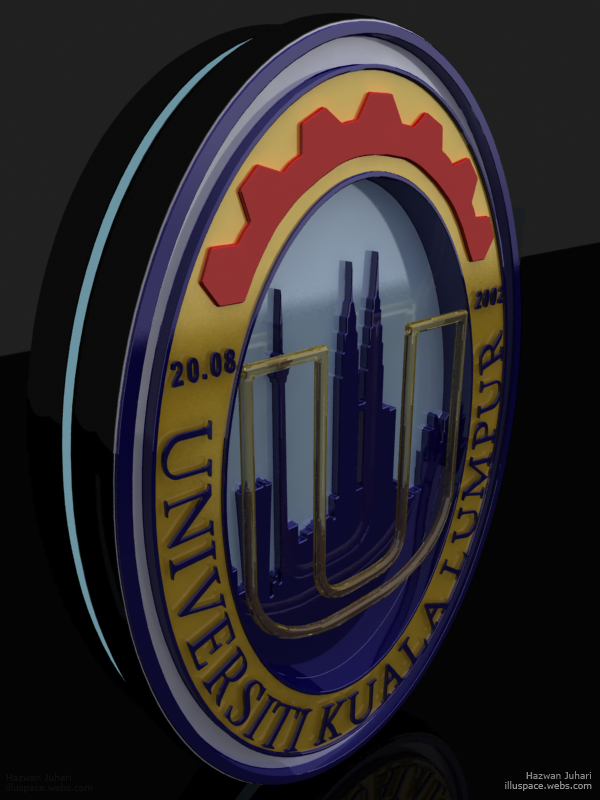My
Proposal Report (DRAFT)
Before submitting the actual proposal
report,my supervisor ask me to do the draft proposal first.With the draft,it
can help the supervisor to see wheather the student understand what is the
purpose of the project.Below is my draft proposal :
Abstract
The general purpose of server virtualization
is twofold: to reduce the operational cost and to upgrade the efficiency of the
workstation. Server virtualization is the partitioning of a physical server
into smaller virtual servers. In server virtualization the resources of the
server itself are hidden, or masked, from users, and software is used to divide
the physical server into multiple virtual environments, called virtual or
private servers.
Virtualization is a method of running
multiple independent virtual operating systems on a single physical computer.
It is a way of maximizing physical resources to maximize the investment in
hardware. Since Moore's law has accurately predicted the exponential growth of
computing power and hardware requirements for the most part have not changed to
accomplish the same computing tasks, it is now feasible to turn a very
inexpensive 1U dual-socket dual-core commodity server into eight or even 16
virtual servers that run 16 virtual operating systems. Virtualization
technology is a way of achieving higher server density. However, it does not
actually increase total computing power; it decreases it slightly because of
overhead. But since a modern $3,000 2-socket 4-core server is more powerful
than a $30,000 8-socket 8-core server was four years ago, we can exploit this
newly found hardware power by increasing the number of logical operating
systems it hosts. This slashes the majority of hardware acquisition and
maintenance costs that can result in significant savings for any company or
organization.
This research study will reviews the
various types of software of server virtualization which will then be used as
case studies to test and validate the proposal reliability estimation methods.
Sensitivity analysis techniques will be proposed and conducted to identify areas
of improvement to the server virtualization realibility.The research study will
concludes with recommendations on the most suitable software server
virtualization in terms of system’s topology.
Introduction
The objective of virtualization is to enable
sharing, optimized utilization, scalability and management of a server's
resources without having to know its inherent complexities. Server
virtualization eases the disaster recovery process as well as improving upon
server availability, scalability and manageability by centralizing all server
administration activities. However, it is unrealistic to expect the
virtualization can manage to do all the application without any disturbance or
interrupted. The reliability of server virtualization cannot be guaranteed
absolutely as the technology nowadays evolve everyday and disturbance can cause
some disastrous. Sensitive sectors might think judiciously if the server
virtualization is used to create virtual private servers shared with unrelated
or unknown users.
Server virtualization reliability
estimation has found to be one of the best methods of maximizing physical
resources to maximize the investment in hardware besides achieving higher
server density. There are several approaches to server virtualization; virtual
machine model, paravirtual machine model and virtualization at the operating
system (OS) layer. Different approach have different application need to be
run, there are several application or software that can be used ; VMware ,
Microsoft Virtual Server , Proxmox VE , UML , Virtual Box , Solaris Zones and
many other application.
Problem
Statement
Number of computers nowadays keeps
increasing because it became more important for us. When the number of
computers or internet subscribers is increasing, the compatible server to
support the entire computer became critical. In term of expenses, it is very
expensive to get so many servers in one time because estimation price for 1
good server is about RM 1000.00 to RM 5000.00 each. Waste of electricity also
can be occur because number of usage server is increase and use for a long time
.Since Moore's law has accurately predicted the exponential growth of computing
power and hardware requirements for the most part have not changed to
accomplish the same computing tasks, it is now feasible to turn a very
inexpensive 1U dual-socket dual-core commodity server into eight or even 16
virtual servers that run 16 virtual operating systems.
There are several virtualization software
have been develop either by Linux or Microsoft,like VMware Player,Virtual
Box,Xen,KVM and UML.All of the above can be use in all operation system (OS)
but there will be some bugs or intruption of unstable software using for
different operation system (OS).In order to make sure server virtualization can
be running smoothly in different operation system (OS) it is purposed to
develop new and stable virtualization software.
Literature
Review
There are several methods or software
application being used or proposed to make server virtualization. One of the
applications usually used was cross-platform virtualization application. With
this method, it will run on your existing processor, whether it running Windos,
Mac, and Linux or Solaris operating systems. Besides that it can extends the
capabilities of the workstation so that it can run multiple operating systems
at the same time. It can run everywhere from small embedded systems or desktop
class machines all the way up to datacenter deployments and even Cloud
environments.However,it have it own limitation where to run this application
the system need to have a huge disk space and memory.
Software developments have been made by
some of the IT engineer and they have come up with something simple and can
work for heavy condition. One of the development have been made, virtualization
can transform hardware into software. It can create a fully virtual machine
that have virtual CPU,RAM,hard disk and network controller so it can be fully
functional virtual machine that can run its own operating system and applications
just like a real computer. Besides that, it can make multiple virtual machines
share hardware resources without interfering with each other so that several
operating system and application can be run at the same time on a single
computer without any interfering.
Methodology
Block
Diagram
Virtual machine
A virtual machine is a type of computer
application used to create a virtual environment, which is referred to as
virtualization. Virtualization allows the user to see the infrastructure of a
network through a process of aggregation. Virtualization may also be used to
run multiple operating systems at the same time. Through the help of a virtual
machine, the user can operate software located on the computer platform.
Virtual software
There is much virtual software that can be
used. The user of Microsoft operation system (OS) can use Windows Virtual PC,
Microsoft Virtual PC 2007, VMware Player 3.0 and Virtual Box 3.0.Linux
operation system (OS) also have their own virtualization application like Xen,
Kernel-based Virtual Machine (KVM), Linux-VServer and User Mode Linux (UML).
Host operating system
A host operating system (OS) is the
original OS installed on a computer. Other operating systems are sometimes
installed on a computer, in addition to the host OS, as guest operating
systems. For the purposes of disk partitioning, a guest OS must be the same as
the host OS. In virtualization, however, a guest OS can be a different from the
host.
Hardware
Desktop, Laptop or workstation.
Objectives
These research studies intend to do
research about which application virtualization is compatible for all operation
system (OS) so that the virtualization server can operate for high density.
Benefits/Contributions
There are many benefits to consolidating
the number of Windows servers in your environment by taking advantage of the
many different server virtualization products on the market. These include:
- Lower number of physical servers by reducing the cost for hardware maintenance because of a lower number of physical servers.
- By implementing a server consolidation strategy, it can increase the space utilization efficiency in your data center.
- By having each application within its own "virtual server" you can prevent one application from impacting another application when upgrades or changes are made.
- You can develop a standard virtual server build that can be easily duplicated which will speed up server deployment.
- You can deploy multiple operating system technologies on a single hardware platform
Work
Plan
The time frame allocated for this research
study is 6 months. It will start in January 2012 and is projected to be
completed in December 2012.The Gantt chart for the project and its milestone
are shown as in Table 1.














0 comments:
Post a Comment